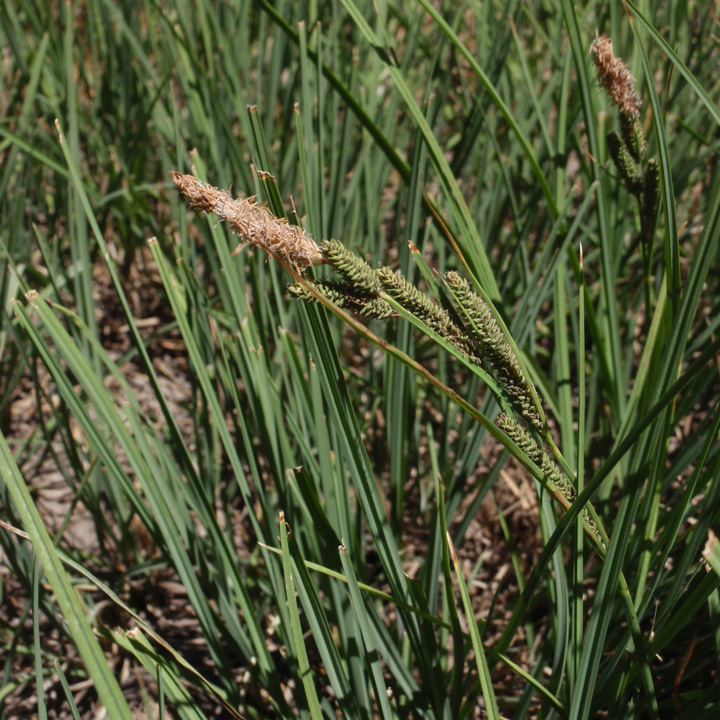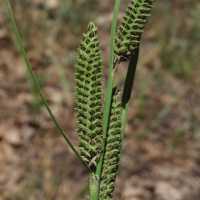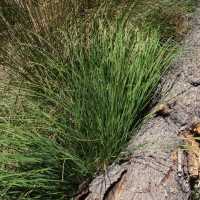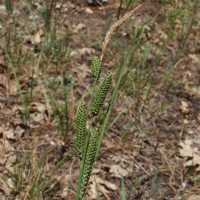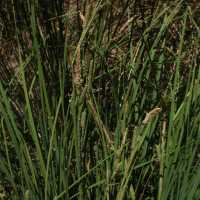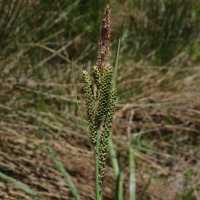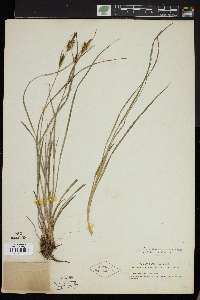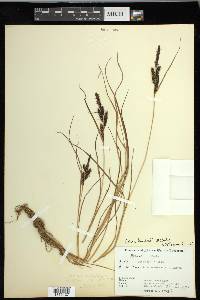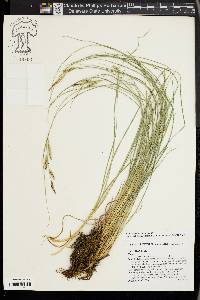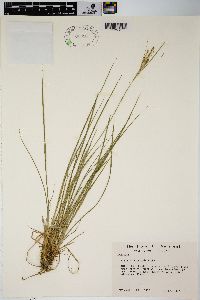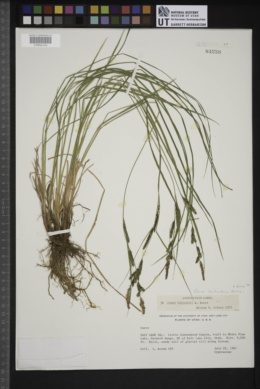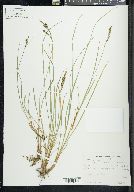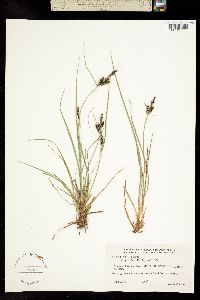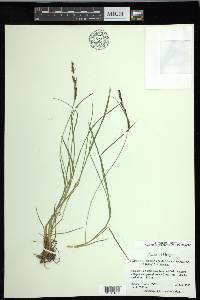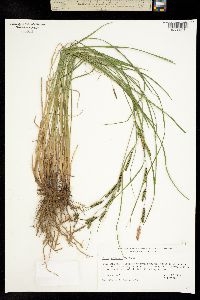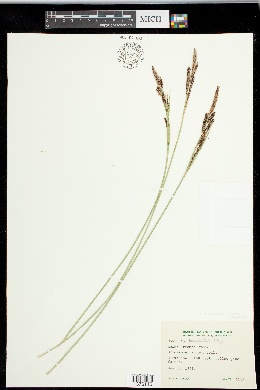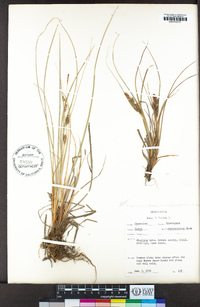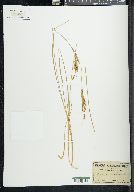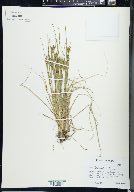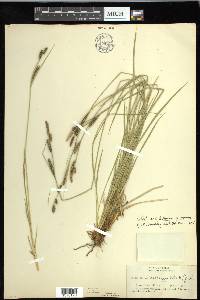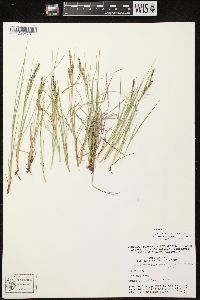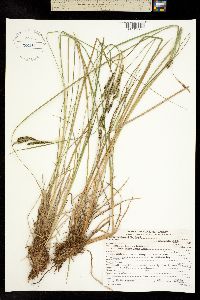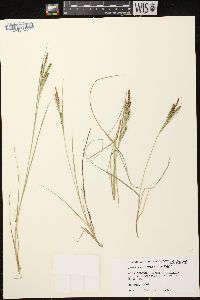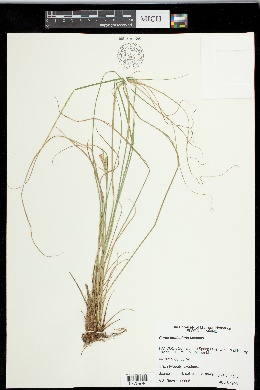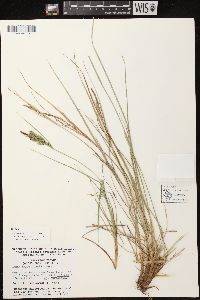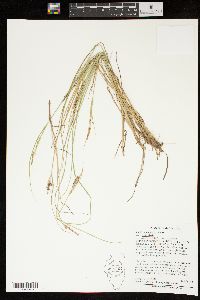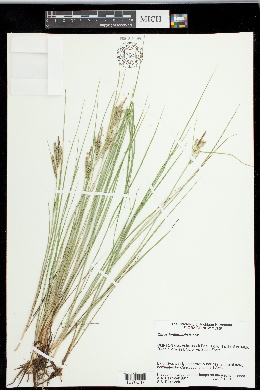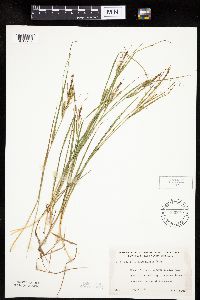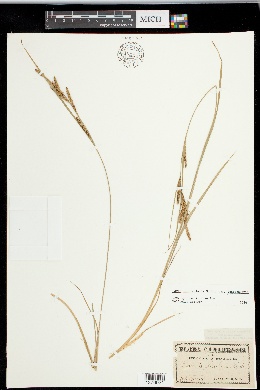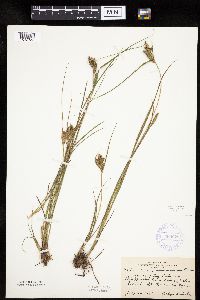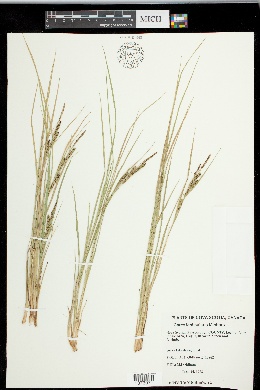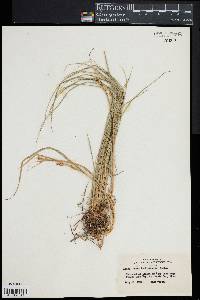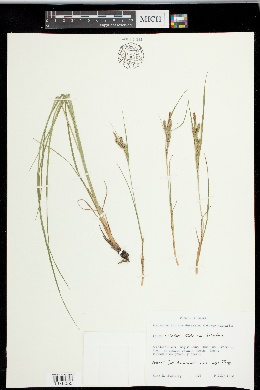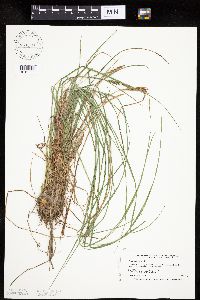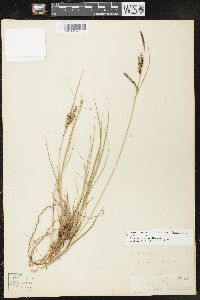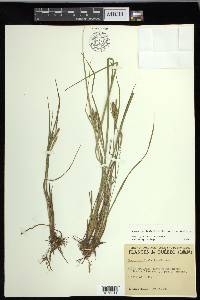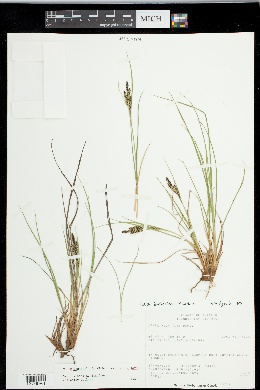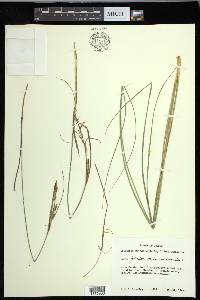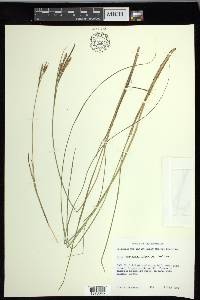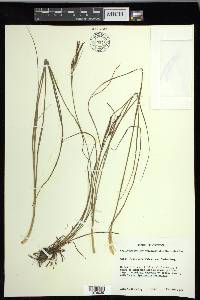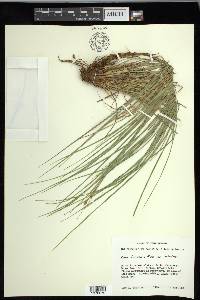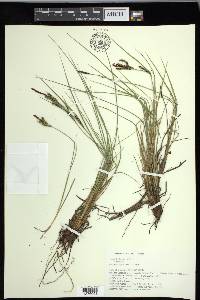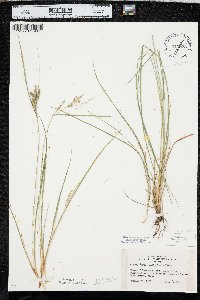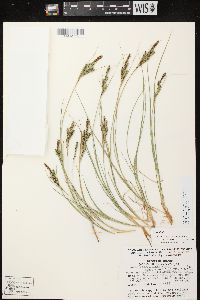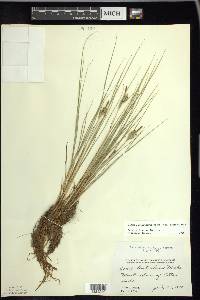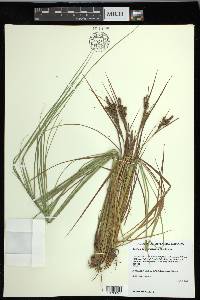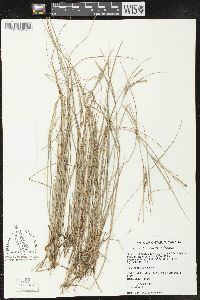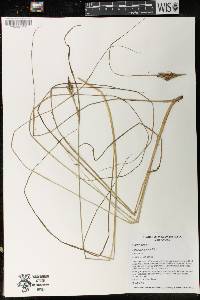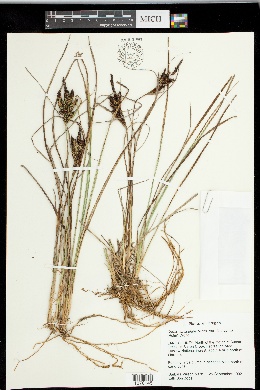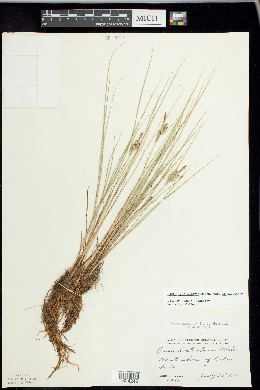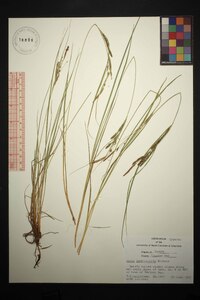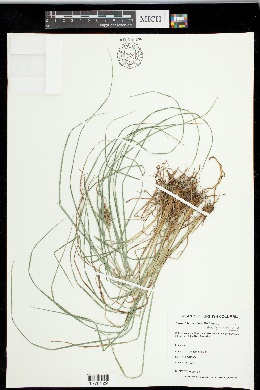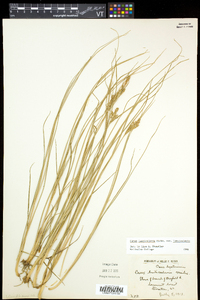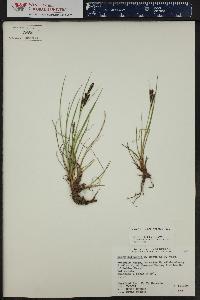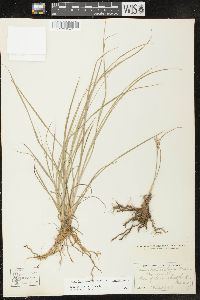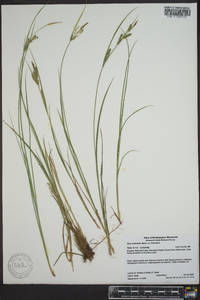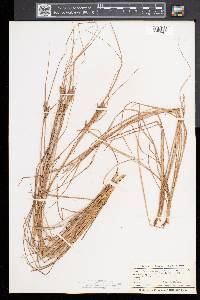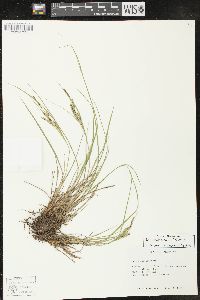Carex lenticularis
|
|
|
|
Family: Cyperaceae
Lakeshore Sedge, more...shore sedge, tufted sedge
|
Plants cespitose. Culms obtusely angled, glabrous. Leaves: basal sheaths brown; sheaths of proximal leaves glabrous, fronts lacking spots and veins, entire, apex truncate, somewhat prolonged; blades amphistomic, papillose on both surfaces. Proximal bract longer than inflorescence. Spikes erect; proximal 3-4 spikes pistillate, base cuneate or attenuate; terminal 1 spike staminate. Pistillate scales pale brown or black, shorter than perigynia, apex obtuse, awnless. Perigynia ascending, green, veined, tightly enclosing achenes, thin-walled, ellipsoid or ovoid, dull, base truncate, distended, apex acute, glabrous. Achenes not constricted, glaucous. Carex lenticularis is distinctive in vegetative and reproductive characters. Plants are slender, light yellow-green, cespitose, with pale brown basal sheaths and proximal sheaths. The inflorescence bract is longer than the inflorescence, which has a single staminate spike or, in arctic or alpine taxa, a gynecandrous terminal spike. Proximal spikes are not staminate at the apex, unlike other members of sect. Phacocystis in which the proximal spikes may have staminate flowers at the apex. Perigynia are veined, distended at the base by the achenes, white on the proximal half, and stipitate. The amphistomic leaves and high chromosome numbers also distinguish the species, which includes five, usually allopatric, varieties in North America that may be difficult to separate in areas where their ranges overlap. Very closely related species, which may be conspecific, are C. rufina and C. eleusinoides in North America and C. hermannii in Central America. The South American-Australasian C. decidua is also very similar to the complex.
FNA 2002, Martin and Hutchins 1980 Common Name: lakeshore sedge Duration: Perennial Nativity: Native Lifeform: Graminoid General: Densely tufted with obtusely angled, glabrous stems 20-80 cm tall, not obviously rhizomatous or with very short rhizomes only. Vegetative: Leaves erect, narrow and elongate, flat or nearly so, sometimes channeled at the base, with brown basal sheaths, entire, truncate apex, papillose on both surfaces, mostly 2-4 mm wide. Inflorescence: Erect spikes, usually 3-6, erect, sessile or with the lower ones pedunculate, all slender and more or less elongate, mostly 1.5-5 cm long and seldom over 5 mm thick, lower 3-4 spikes pistillate, with bases cuneate to attenuate, terminal spike staminate, bract subtending lowest spike elongate and leafy, equaling or commonly surpassing the inflorescence, other bracts reduced; pistillate scales pale brown to black, shorter than perigynia, perigynia ascending, green, 2-3 mm long, somewhat compressed, lanceolate to ovate or elliptical, 3-7 nerved on face, each 3 nerved above, 4-7 nerved below, tightly enclosing achenes; achene lenticular, 1-1.5 mm long, distinctly shorter than the perigynia. Ecology: Found in wet meadows, on stream banks, and in other wet spaces from 7,500-11,000 ft (2286-3353 m); flowers May-August. Notes: There are several varieties of this species in the region, ours is likely all var. lipocarpa which is distinguished by the perigynium not being spotted purple brown with 5-7 veins and the beak being purple-brown at the apex. This is a densely tufted sedge (occasionally with rhizomes) with terminal staminate spike(s) and lateral pistillate spikes. Like Carex senta and C. endlichii, it shares pistillate flowers with 2 stigmas, but has leaf bases that do not become ladder-fibrillose in age. It overall has a finer textured appearance that either of the other two, both in leaf bases and inflorescences. (Notes: Max Licher and Glenn Rink 2012) Ethnobotany: Unknown Etymology: Carex is the classical Latin name for the genus, while lenticularis means shaped like a lens. Synonyms: None Editor: SBuckley, 2010 Densely tufted, with very short or no rhizomes, the flowering stems 2-8 dm, surrounded by lf-bases of the previous year; lvs mostly 2-4 mm wide, V-shaped in x-section, with papillae and stomates on both sides, lacking palisade tissue; spikes 3-6, approximate or ±remote, erect, sessile or the lower ±evidently pedunculate, all slender (more so than in no. 188 [Carex paleacea Wahlenb.) and ±elongate, mostly (1-)1.5-5 cm, seldom appreciably over 5 mm thick, the terminal one staminate, less often gynaecandrous or with a few basal perigynia, the others generally pistillate; bract subtending the lowest spike elongate, commonly surpassing the infl, sheathless or with a short white sheath, the others more reduced; pistillate scales reddish-brown to sometimes blackish or dark brown, with a conspicuous broad pale or green midstrip, commonly shorter than and exposing the perigynia, these 1.7-3.2 mm, somewhat compressed, lanceolate to ovate or broadly elliptic, 2-ribbed, 3-7- nerved on each face, short-stipitate and with a slender, terete, entire, often black-tipped beak 0.1-0.3 mm, the body commonly greenish distally, papillate only on the upper third; achene lenticular, whitish-iridescent, distinctly shorter than the perigynial cavity, adnate below to the swollen perigynium-base; 2n=86-92. Wet shores and beaches; Lab. to Alas., s. to Mass., N.Y., Wis., Minn., and Calif.; e. Asia. Ours is var. lenticularis. Gleason, Henry A. & Cronquist, Arthur J. 1991. Manual of vascular plants of northeastern United States and adjacent Canada. lxxv + 910 pp. ©The New York Botanical Garden. All rights reserved. Used by permission. |

